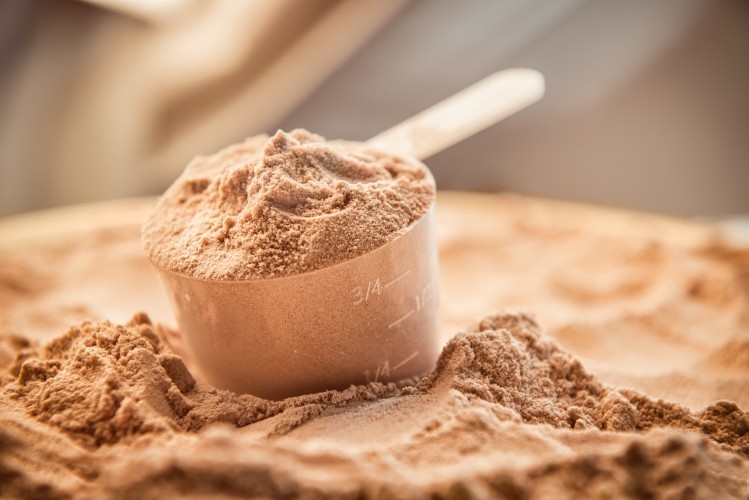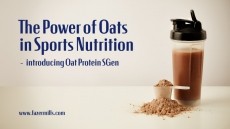Mealworm protein is as effective as whey, say researchers

The anabolic properties of protein sources are largely defined by their protein digestion, amino acid absorption kinetics and amino acid composition. Animal-sourced proteins are generally considered to have stronger anabolic properties than plant-derived proteins as the latter have an incomplete amino acid profile with low amounts of leucine and/or insufficient lysine, histidine, or methionine.
Insects have recently been identified as a potentially better option as they have a high protein content and their amino acid composition indicates that insects may provide a high-quality protein source that can stimulate postprandial muscle protein accretion similarly to high-quality animal-based protein sources. Lesser mealworm derived protein has an amino acid composition that closely resembles protein sources such as milk or meat.
But so far, there are no data available on lesser mealworm protein digestion and amino acid absorption kinetics or on the postprandial anabolic response to lesser mealworm protein ingestion.
The authors of the current study hypothesised that lesser mealworm protein is properly digested and absorbed, and has the capacity to increase muscle protein synthesis rates in humans both at rest and during recovery from exercise.
In order to test their hypothesis they conducted a double-blind randomised controlled trial at Maastricht University Medical Centre, in the Netherlands, in which 24 healthy, young men (aged 18-35) were randomly assigned to ingest either 30 g of lesser mealworm derived protein (produced by Protifarm, in the Netherlands, intrinsically L-[1-13C]-phenylalanine and L-[1-13C]-leucine) or milk-derived protein after a unilateral bout of resistance-type exercise. To allow ingestion of 30 g protein, subjects ingested either 64 g powdered lesser mealworm or 40 g dried milk protein concentrate dissolved into 300 mL water.
The participants were instructed to refrain from strenuous exercise for three days prior to the experiment and habitual protein intake was controlled. Primed continuous L-[ring-2H5]-phenylalanine, L-[ring-3,5-2H2]-tyrosine, and L-[1-13C]-leucine infusions were applied, with frequent collection of blood and muscle tissue samples.
Their results indicate that a total of 73% ± 7% and 77% ± 7% of the lesser mealworm and milk protein–derived phenylalanine was released into the circulation during the five hour postprandial period, respectively, with no significant differences between groups (P < 0.05).
Muscle protein synthesis rates increased after both lesser mealworm and milk protein concentrate ingestion from 0.025 ± 0.008%/h to 0.045 ± 0.017%/h and 0.028 ± 0.010%/h to 0.056 ± 0.012%/h at rest and from 0.025 ± 0.012%/h to 0.059 ± 0.015%/h and 0.026 ± 0.009%/h to 0.073 ± 0.020%/h after exercise, respectively (all P < 0.05), with no differences between groups (both P > 0.05). Incorporation of mealworm and milk protein-derived L-[1-13C]-phenylalanine into muscle protein was greater after exercise than at rest (P < 0.05), with no differences between groups (P > 0.05).
The research team conclude: "Ingestion of lesser mealworm and milk protein concentrate are both followed by rapid protein digestion and amino acid absorption, with more than 70% of the ingested proteinbound phenylalanine being released into the circulation during the 5-h postprandial period.
"Ingestion of both mealworm and milk protein concentrate increased muscle protein synthesis rates both at rest and during recovery from resistance-type exercise, with no differences between protein sources."
These data are the first to show that insect-derived protein can be rapidly digested and effectively absorbed, with a postprandial rise in protein-derived amino acid availability in the circulation that is not different from a high-quality dairy protein source.
The report adds: "Clearly, the high quality of the insect-derived proteins compared with existing commercial plant-based protein concentrates and isolates will be of particular relevance in populations where protein quality is of great(er) importance. The latter includes people that consume less protein and suffer from anabolic resistance, such as the older and/or more clinically compromised populations.
"A more sustainable protein source without the obvious limitations of low digestibility, low EAA content, and/or specific amino acid deficiency would prove to be highly attractive. Together with the additional benefits of insects containing high amounts of micronutrients and antioxidants, our data provide a strong incentive for incorporating insects into the Western diet. The consumption of insects is already common for >2 billion people worldwide, mainly in Asia, Africa, and South America. It will be interesting to see insects and insect-derived proteins becoming a major protein source in our future food supply."
Source: The American Journal of Clinical Nutrition
Wesley J H Hermans, Joan M Senden, Tyler A Churchward-Venne, Kevin J M Paulussen, Cas J Fuchs, Joey S J Smeets, Joop J A van Loon, Lex B Verdijk, Luc J C van Loon,
"Insects are a viable protein source for human consumption: from insect protein digestion to postprandial muscle protein synthesis in vivo in humans: a double-blind randomized trial"












